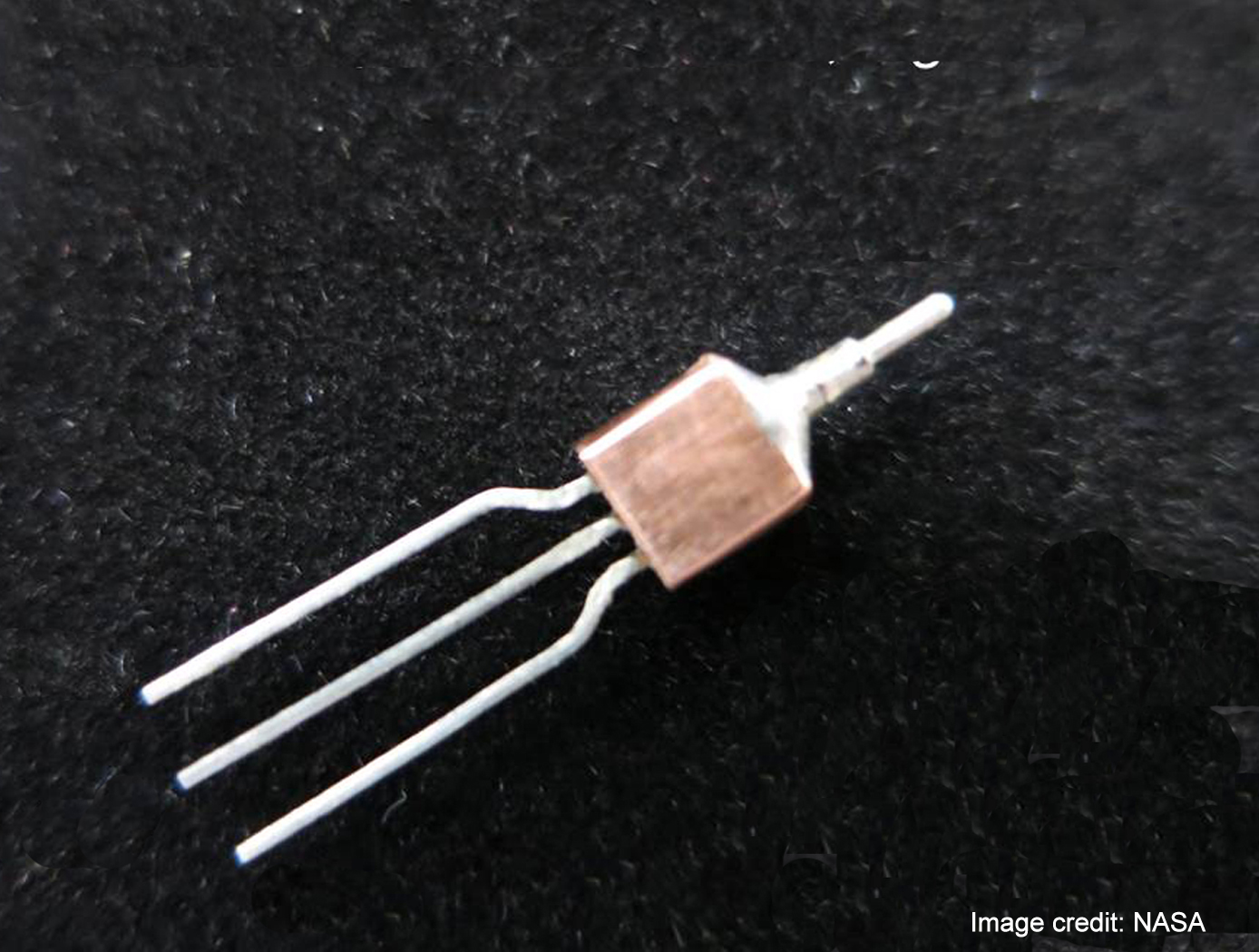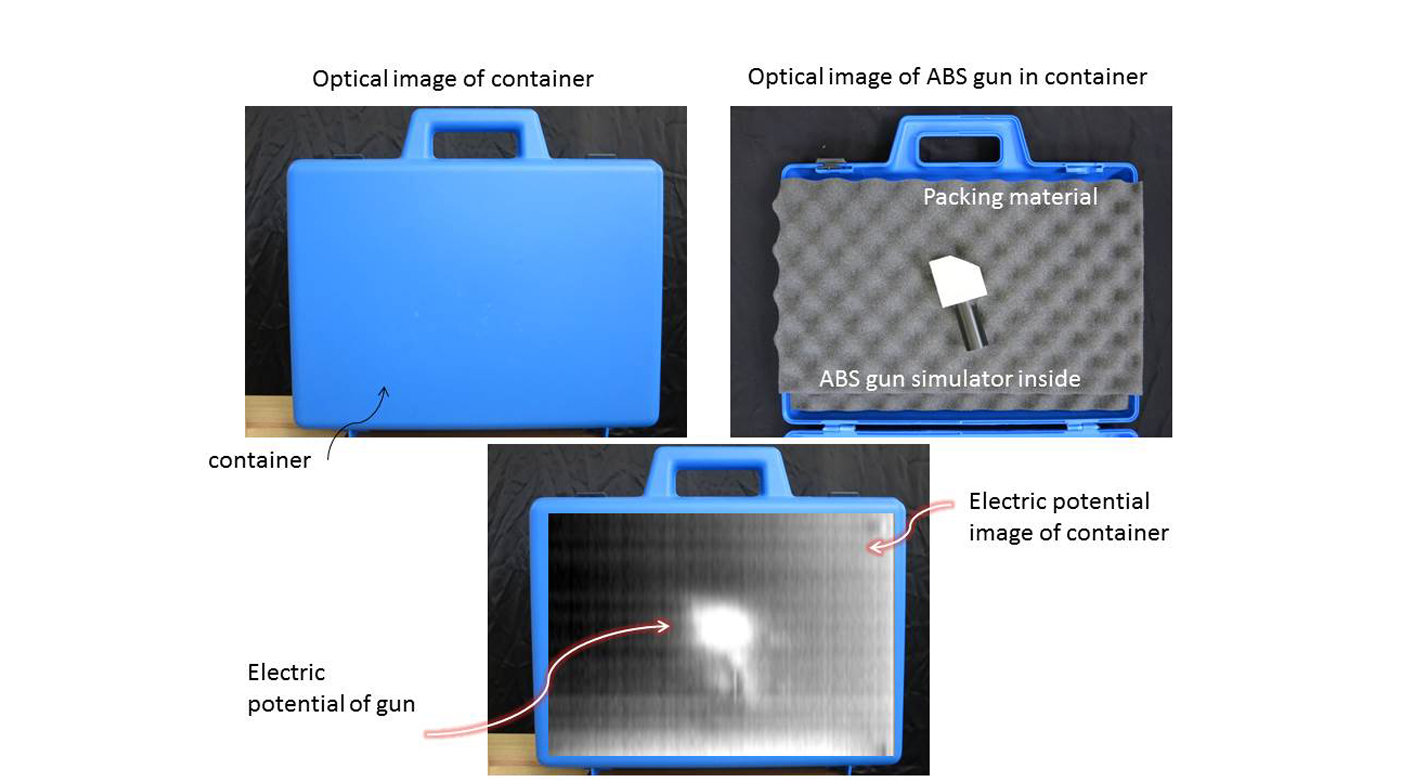Solid State Sensor for Detection and Characterization of Electric Fields
sensors
Solid State Sensor for Detection and Characterization of Electric Fields (LAR-TOPS-235)
Non-contact method for measurement of the true electric field revealing properties and characteristics of materials and plasmas
Overview
NASAs Langley Research Center has developed a new solid state integrated circuit based on field effect transistor (FET). Called ergFET, the sensor characterizes the electronic properties of materials, allowing for detection of items like baggage, wiring, liquids, and can even be used for medical imaging such as remote EKG.
The Technology
This equilibrium-reversing-gate field effect transistor (ergFET) deploys an electrode near the gate of the transistor to control and reverse leakage currents which are typical in transistors and can lead to measurement errors. It can be built into an array to enable higher resolution imaging and is a solid state device free of moving parts. This enables portable and hand held sensor designs.


Benefits
- High sensitivity
- Improved resolution
- Portability
- Improved robustness
- Solid state, no moving parts
Applications
- Security screening
- Medical imaging
- Non-destructive testing
- Intrusion detection
- Forensics
- Combustion science
- Sensor design
- Electrostatic discharge (ESD) mitigation
Technology Details
sensors
LAR-TOPS-235
LAR-18484-1
Generazio, E. R: Electric Potential and Electric Field Imaging with Applications,
Materials Evaluation, Volume 73, Issue 11, November 1, 2015, pp 1479-1489
Similar Results

Electric Field Imaging System
The EFI imaging platform consists of a sensor array, processing equipment, and an output device. By registering voltage differences at multiple points within the sensor array, the EFI system can calculate the electrical potential at points removed from the sensor. Using techniques similar to computed tomography, the electrical potential data can be assembled into a three-dimension map of the magnitude and direction of electric fields. Since objects interact with electric fields differently based on their shape and dielectric properties, this electric field data can then be used to understand shape,
internal structure, and dielectric properties (e.g., impedance, resistance) of objects in three dimensions.
The EFI sensor can be used on its own to see electric fields or image electric fieldemitting objects near the sensor (e.g., to evaluate leakage from poorly shielded wires or casings). For evaluation of objects that do not produce an electric field, NASA has developed generator that emits a low-current, human-safe electrostatic field for snapshot evaluation of objects. Additionally, an alternative EFI system optimized to evaluate electric fields at significant distances (greater than 1 mile) is being developed for weather-related applications.

Wireless Electrical Devices Using Floating Electrodes
The technology presents a fundamental change in the way electrical devices are designed, using an open circuit in conjunction with a floating electrode, or an electrically conductive object not connected to anything by wires, and powered through a wireless device. This system uses inductor-capacitor thin-film open circuit technology. It consists of a uniquely designed, electrically conductive geometric pattern that stores energy in both electric and magnetic fields, along with a floating electrode in proximity to the open circuit. When wirelessly pulsed from the handheld data acquisition system (U.S. Patent Number 7,159,774, Magnetic Field Response Measurement Acquisition System), the system becomes electrically active and develops a capacitance between the two circuit surfaces. The result is a device that acts as a parallel plate capacitor without electrical connections.

Highly Accurate Level Sensor
The FAA and Aircraft Industry recognize the need to reduce fuel tank explosion risk
by eliminating ignition sources and changing fuel tank design and maintenance.
This technology can be utilized to wirelessly sense the level of fuel in aircrafts, thus
mitigating risk of inadvertent electrical failures and sparks. NO wires enter the fuel
tank and the radio frequency transponder typically requires 10 milliwatts of power or
less.
The technology can be used for dielectric tanks, by simply applying the sensors to the
tank surface (as pictured). Through certain techniques the technology can be applied
on metal tanks with no wires entering the tank from the outside.
Currently, there are more than 20,910 jet aircraft in service. This presents a large
market opportunity for retrofitting this technology onto existing airplane fuel tanks
Rapidly evolving aviation services are expected to spur worldwide requirement for
36,770 new jet aircraft by 2033. This presents a growing market for new installations.
Wireless Sensor for Pharmaceutical Packaging and Monitoring Applications
The SansEC sensor is an electrically open circuit without electrical connections. Having a device without circuits eliminates a common failure source of electrical systems. It consists of a uniquely designed thin-film electrically conductive geometric pattern that stores energy in both electric and magnetic fields. When wirelessly interrogated from the portable data acquisition system, the sensor becomes electrically active and emits a wireless response. The magnetic field response attributes of frequency, amplitude, and bandwidth of the inductor correspond to the physical property states measured by the sensor. Container damage, temperature, spoilage, or substance level is detected by changes in resonant frequency read by the accompanying magnetic
field data acquisition system. A unique feature of the sensor is its ability to measure more than one physical attribute at the same time. In addition, by eliminating electrical connections, damage to any area of the sensor will not prevent it from being powered or interrogated.

SansEC Spectroscopy
This technology is a method of identifying material anomalies and defects on or within a material by observing and quantifying how a localized change in either conductivity, permeability or permittivity changes the responding electric field and magnetic fields. This approach has many advantages over typical spectroscopy methods, particularly because typical methods only measure changes in the electric field.
This advancement will allow for potentially deeper detection of a material's abnormalities/defects (including subsurface measurements) with limited electrical requirements. The technology has applications as diverse as medical oncology screenings or surface measurements of aeronautic skins.
Another promising application is bore hole geological spectroscopy. In such an application, an array of sensors could be embedded into bore hole drills for exploratory deep wells. As the drill tooling slides past the bore hole wall, spectroscopic sampling of the side walls reveals important dielectric property information that is highly useful to prospectors and geologists in determining the probability of specific resources that may exist in the subterranean geology.



